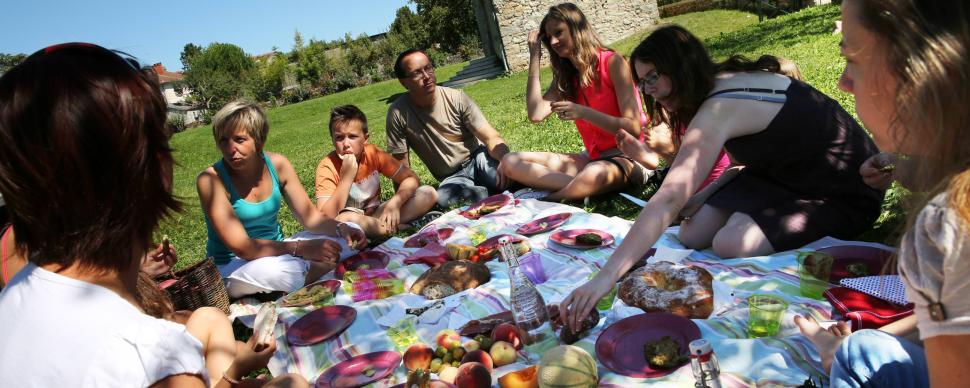Top 10 of the Aveyron
Specialities

1. aligot
This speciality form the North Aveyron, also called the "ruban de l’amitié" or ribbon of friendship, is a mix of mashed potatoes and tome fraiche cheese. Originally a subsistence dish, it is now a dish for special occasions.
2. roquefort CHEESE
Roquefort, the “king of cheeses” is made using unpasteurised sheep’s milk and is matured in the natural cellars in Roquefort-sur-Soulzon, South Aveyron. The legend has it that a love struck shepherd left some bread and sheep’s cheese in a cave in Le Combalou to follow a shepherdess. When he came back some time later he found the bread and cheese covered in mould. He tasted the cheese and loved it. Roquefort was born.
Visit the Roquefort natural cellars


3. farçous
Farçous are little pancakes made with lots of herbs from the garden and swiss chard for the vegetarian version and with porc meat (sausage, bacon...). Forgotten for years, this Aveyron recipe has come back into popularity notably thanks to the development of local and evening markets in the summer period.
4. the tripous
Traditionally, it was prepared by housewives to be eaten on Sunday mornings before going to church. It slowly became the staple morning snack after a long night out and is still traditionally eaten in lieu of breakfast during village fêtes.
The tripous is composed of calf or lamb stomach, ham stuffing, garlic and parsley.


5. The estofinado
The traditional dish of the boatmen on the river Lot based on stockfish (a sort of dried cod), potatoes, eggs, garlic and parsley.
Stockfish arrived in the Aveyron via the boatmen who brought it up the Lot from Bordeaux. The boatmen fixed it to the stern of their boats for ten days or so, which gave the fish the time to re-hydrate. The boats docked at Bouquiès and the boatmen ate at Livinhac-le-Haut. This is how estofinado became the dish of the Decazeville miners. Almont-les-Junies is now the estofinado capital.
6. The gâteau à la broche
The origins of this dessert are still talked about but it would seem that it came into being at the hands of the King of Prussia's pâtissier in 1790. Its appearance is due to its method of fabrication. In fact, the liquid paste is gradually poured onto a conical spit that is turned close to a source of heat. Bit by bit, the paste solidifies, thus creating its very original shape.


7. The fouace
Fouace is a very old traditional cake. The word “fouace” used to mean a bread oven and now is used as one of the oldest patisseries found on the table to celebrate epiphany. Widely available in bakeries and markets of Aveyron, the fouace is part of daily local food, eaten as a snack or for breakfast. You will not miss it during your holidays in Aveyron !
8. The Échaudés
Echaudé is an aniseed flavoured biscuit.
In the past, pilgrims on the Compostella way used to eat them whilst walking across the Rouergue.
Echaudés are cooked twice: first boiled and then baked in an oven. It can be eaten as a snack or dunked in coffee or hot chocolate. Some people even dunk it in red wine !


9. Soupe au Fromage
Some say there is soup only in the name. Is it because the serving spoon must stand by itself in the middle of this cheese soup in order to be brought to the table ? It doesn't matter, it is so nice and perfect to warm up the cold winter days !
10. Flaune
This is THE dessert from Millau ! And a dessert that comes with a problem if you try to make it outside Aveyron. Indeed, where will you find sheep "recuite" (a sort of ewe clotted cream) far from the Causses ?




